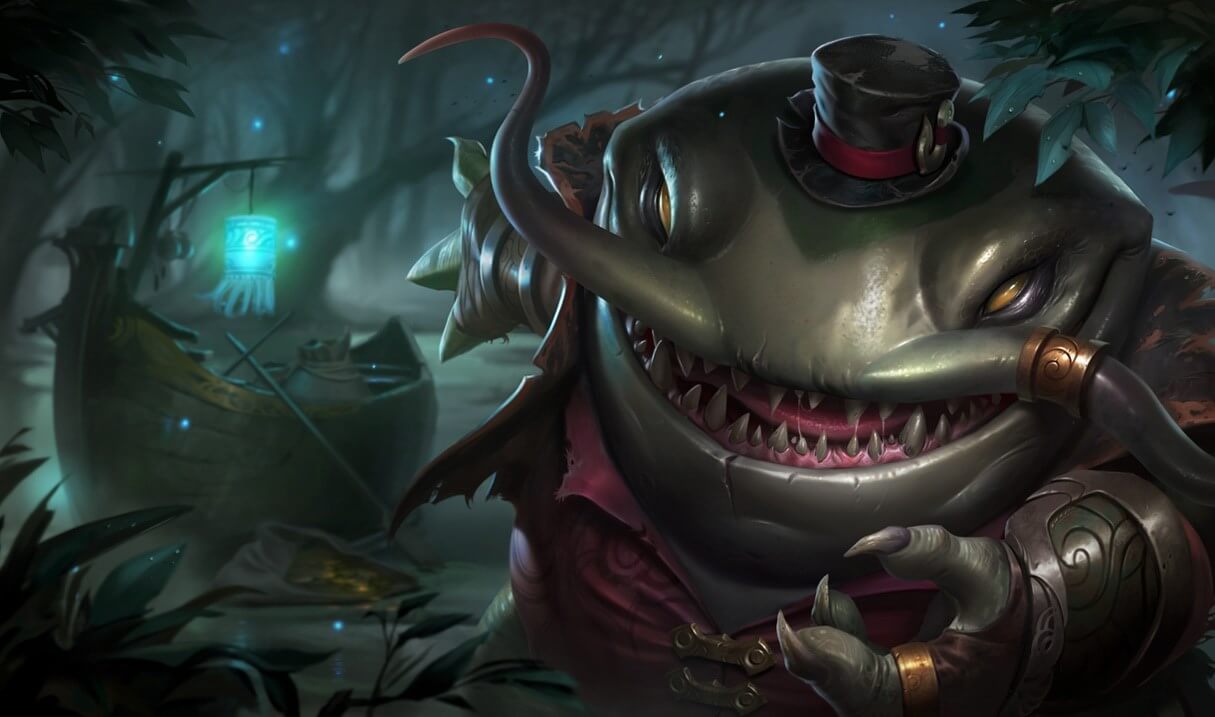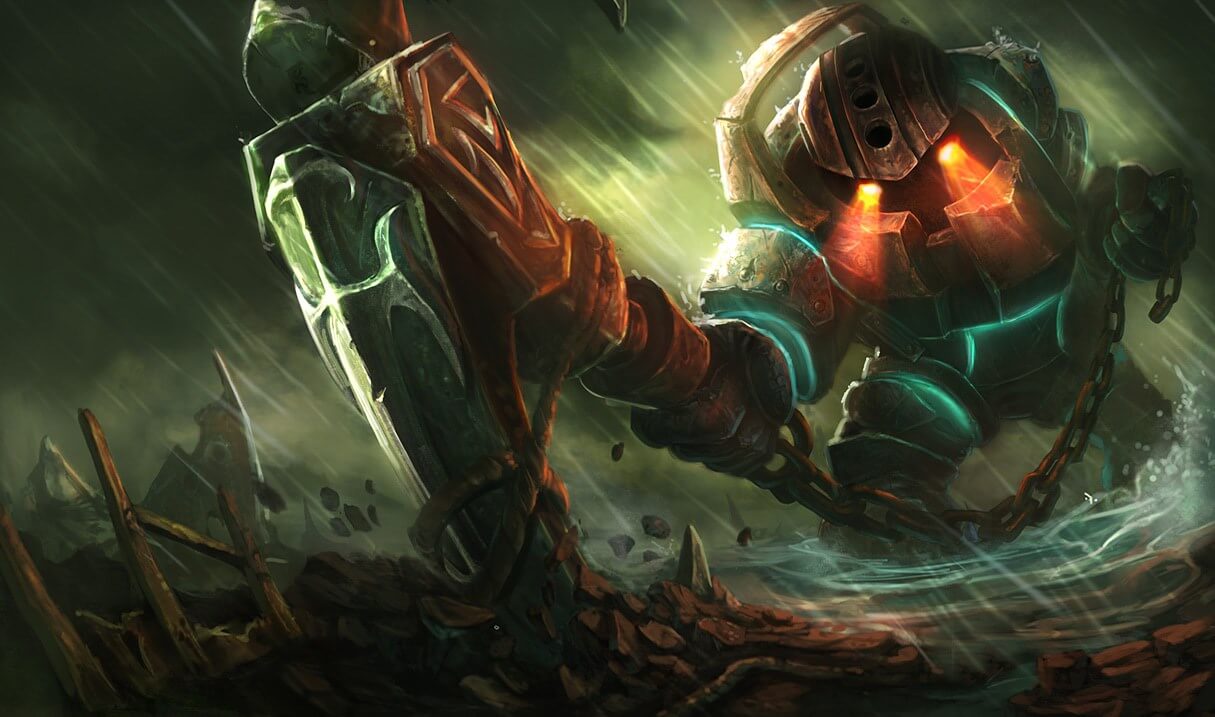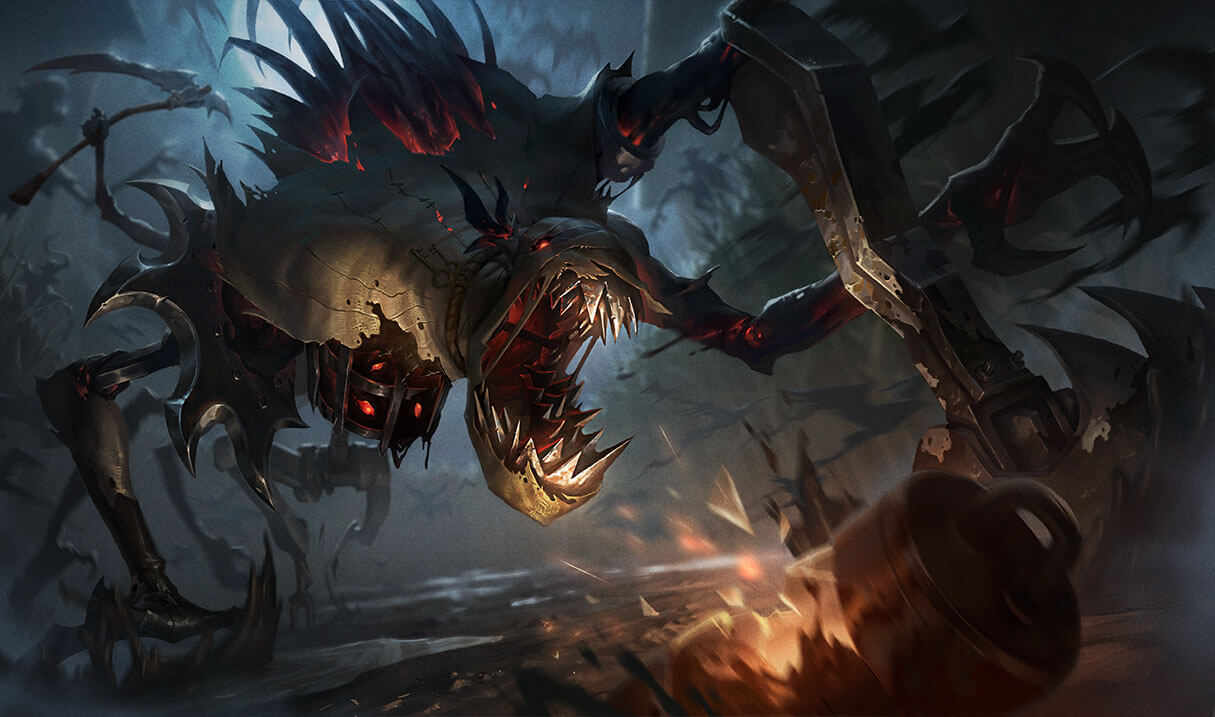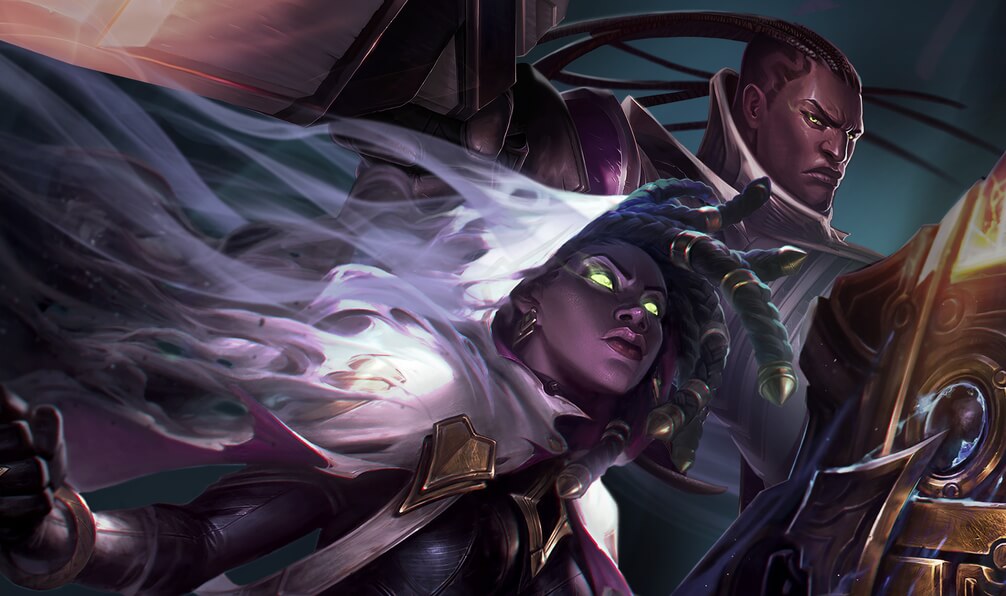TFT Guide to Standard Leveling
Welcome to our TFT guide covering the standard leveling strategy. We cover the Basics of Leveling in another guide, but for this article, I’ll be going in depth on the topic of standard or default comps.
Standard comps are still some of the strongest and most consistent comps in TFT, and the core strategy has been around since the beginning. However, as time passed, players began to innovate more and more upon the basic leveling strategy.
There’s a lot to cover, so let’s jump right into the guide.
What is a Standard/Default Leveling Strategy

As the name suggests, the standard leveling strategy is the basic strategy to level up over the course of the game. Reroll comps want to be under leveled to hit 3-star units and Fast 8/9 strategies save up lots of gold to level up faster.
The Standard Leveling strategy is the baseline for a simple team comp that runs a 4-cost carry. 4-cost carries are reliable to find and are strong enough to carry at 2-star.
Overall, the Standard Leveling Strategy is a guideline to both keep in board strength while also optimizing your gold generation.
Power Spike Rounds
I touch on this concept in the other leveling guides, so I’ll only briefly reiterate them here. In TFT, there are natural points in the game where you want to be spending gold to level up or roll. These Stages are:
- Round 3-2 (Second Augment)
- Round 4-1/4-2 (Last Augment)
Note: Some players may opt to power spike at 4-2 to gain some extra gold and see what their last augment is. Others will do so at 4-1 in order to pick up contested units or continue a win streak. - Round 5-1 (End Game)
These Rounds naturally correspond to the baseline Standard Leveling strategy. Outside of these rounds, you generally don’t want to be spending too much gold. It’s important to build your economy to set you up for success in later points of the game.
Standard Leveling Strategy

With these Rounds in mind, let’s dive into detail on the major points in the game and what to do.
Stage 2
In general, Stage 2 is the early point in the game where you can play flexibly and see what happens.
If you find multiple copies of a 1-cost unit, you may consider playing a Reroll Strategy. Or maybe you find lots of upgrades, and decide to go for a win streak. Conversely, if you can’t find upgrades naturally, you can decide to commit to losing to build up some streak gold.
Whatever the case may be, here’s a general outline of what to do for the standard leveling strategy.
2-1: Optional Level 4
Round 2-1 is the first round where you will fight another opponent. During Stage 1, you’ll be fighting neutral creeps to get Gold, Items, or other loot. Here is where you will decide whether to level up or not.
At 2-1, you will be exactly 4 Gold/XP from level 4. If you find lots of upgrades early or a strong core of units from the same trait, you can opt to level up to try and win streak. This is an efficient use of Gold as you’re hitting level 4 with only one XP purchase.
Conversely, if you don’t find upgrades in Stage 1, you should hold off to lose streak and try to hit your interest breakpoints (10, 20, etc) asap.
2-5: Optional Level 5
After the Carousel comes Round 2-5. Once again, this is another leveling breakpoint as you will be 4 Gold/XP away from level 5. If you’re win streaking, you should consider leveling up to add in another unit to keep your streak going. If you’re not confident you can hold onto your streak, you can hold off and build up your economy instead.
If you didn’t level up to 4 prior to this point, you will be 8 Gold/XP from level 5. If your luck turns around from your start, you can maybe decide to level up to 5 to start a win streak and save some HP. Otherwise, you can stay at level 4 and continue building up your gold.
2-7: Krugs
2-7 is the final round of Stage 2, and you will be fighting Krugs at this point. You will ideally have a streak of at least 2 so you can get some extra Gold from the minion round.
If you leveled up at all prior to this point, you don’t need to worry about leveling up just yet. If you didn’t level at all, you should be Level 4 with 6/10 XP toward level 5.
At this point, you can opt to level up to 5 in order to get a better shop with higher-cost units on 3-1. Or if you want to keep saving Gold, you can stay at level 4.
If you’re sitting at 25ish Gold, you can still consider leveling up to upgrade your next shop while still staying above your current interest breakpoint (20).
Stage 3
After Stage 2, the game definitely simplifies a bit if you just want to follow the standard strategy.
3-1: Level 5 Minimum
If you committed to lose streaking and saving gold, you will still be level 4 at 3-1 with 8/10 XP. It’s generally advised to level up to 5 here so you don’t lose too much HP from losing fights. If you still feel healthy HP wise, you can stay level 4 to keep building up your economy.
3-2: Level 6
The basic strategy suggests you to level up to 6 on 3-2. This is after you receive your second Augment, and you can look to this round to upgrade your board.
If you’re on a win streak, you definitely want to level up to maintain it and add in another strong unit. Even if you’re on a lose streak, you still should try to hit level 6 to not lose fights badly. If you stay at level 5 and lose fights by large margins, you will lose HP very quickly.
Stage 4
Similar to Stage 3, Stage 4 only really has one power spike round that’s important.
4-1: Level 7
Once again, the standard leveling plan has most players level up to 7 at 4-1. This is right after the minion round, which will let you build up your gold. Like all power spike stages, you can use this moment to evaluate your current position.
If you’re strong, you can start saving up for level 8, and if you’re weak, you should commit some gold to strengthen your board.
Stage 5
Stage 5 is generally the final Power Spike you should play toward. However, you can still look toward Stage 6 as an endgame power spike if you’re confident you’ll survive until then.
5-1: Level 8
The final main power spike will be on Round 5-1. Most players will level up to 8 here and roll down to upgrade their team comp as much as possible. Look to build a board with multiple upgraded 4-cost units and find all the units you need for your team comp.
If you’re able to fully upgrade your team, you can start saving up again for Stage 6 to try and hit level 9 or potentially even go for a 3-star 4-cost if you’re lucky.
Stage 6
In most games, you won’t reach Stage 6. You’ll either die before reaching it or the other players in the lobby will die before then. Even still, if you’re mostly finished upgrading your team on Stage 5, start to save up for Stage 6 for a potential level 9 upgrade.
Stage Breakdown Summary
The stage breakdown can be quite long to keep track of, so here’s a quick summary of the basic leveling strategy.
- 2-1: Optional Level 4 to win streak
- 2-5: Optional Level 5 to win streak
- 2-7: Krugs, latest Level 5
- 3-2: Level 6
- 4-1: Level 7
- 5-1: Level 8
- 6-1: Potential Level 9
Deviations to Standard Leveling
What I just covered is the basic leveling strategy, but you’ll often see players deviate from this strategy depending on the situation. Here are a few examples of how you can deviate from this strategy.
Pre-Leveling

First up, let’s talk about pre-leveling. This isn’t really a deviation from standard leveling. It’s more of a small bonus you can get.
Pre-leveling is the act of spending gold until your are 2 XP away from your level up. By doing this, at the start of the next round, you will naturally level up. When this happens, you shop will have higher odds of hitting higher-cost units.
This is often done during Stage 2 in order to continue a win streak.
- For example, let’s say it’s currently 2-3 and you are level 4 with 4/10 XP.
- The next round will be the carousel, and then it will immediately proceed to 2-5.
- If you’re on a 3 round win streak and have 14+ Gold, it’s very common to pre-level here.
By buying XP once, you will be 8/10 XP and still have 10 Gold to maintain your interest threshold. Once 2-5 begins, you’ll automatically level up to 5, resulting in higher shop odds.
This can also be done at Stage 1-3. If you find multiple upgraded 1-cost units, you may want to pre-level to 4 on 2-1. This way, you have better odds of finding some good 2-cost units.
Aggressive Leveling

Moving on, let’s talk about some true deviations from standard leveling. These deviations will usually boil down to two categories, aggressive leveling and greedy leveling.
For aggressive leveling, you can look to level up faster than the standard leveling game plan. This can be a strong option if you are win streaking and are finding some natural upgrades. By leveling up sooner, you’re putting more pressure onto your opponents and likely continuing your win streak.
However, this comes at a risk. If you level aggressively to win streak, you can put yourself behind if you lose your streak. If you level up sooner than usual and lose immediately after, you lost out on potential interest gold you could’ve made if you didn’t level.
Here are some common points where people level up aggressively.
- Level 6 at 3-1
- Level 7 at 3-5
- Level 8 at 4-2 to 4-5
The main goal of aggressive leveling is to pressure your opponents and get off to an early lead. Doing so successfully can result in a consistent top 4 finish. However, aggressive leveling should be reserved for games where your early luck powers up your team comp naturally, so you shouldn’t just force this strategy every game.
Greedy Leveling

On the other hand, greedy leveling is simply the opposite of aggressive leveling. Instead of leveling up early, you instead level up later than usual in order to build up more gold.
This can be a strong choice to make if you are on a lose streak and want to simply build up more gold than catch up. Eventually, the goal is to build up enough gold so that you can pass other players in levels earlier.
For example, if you want to be greedy you can level up at these rounds:
- Level 6 at 3-5
- Level 7 at 4-2
Greedy leveling can also be a strong choice if your board is decently strong, but you have less gold than usual. In this case, you’re effectively trading your HP in order to gain more gold.
While aggressive leveling is risky for your economy, greedy leveling is risky for your HP.
The overall goal of greedy leveling is to sacrifice your HP in order to later build a team comp that will let you stabilize. If you’re behind, you can use this strategy as a way to all in for a top finish. Or, if you’re ahead, you can be greedy to try and secure a 1st or 2nd place finish.
Fast 9

Lastly, let’s briefly touch on Fast 9. This is the process of saving up gold to hit level 9 quickly before other players. This will allow you to find 5-cost units and power up your board to the point where you stabilize and win every fight afterward.
The same concept can apply to Fast 8. (Save up gold to level up to 8 faster than the lobby, finding 4-cost units easier)
While Fast 8/9 can be it’s own dedicated strategy, it can also be a variation of a game you played with standard leveling.
If you are aggressive early game and find yourself in a big lead, you can choose to sacrifice your HP in Stage 5 to save up for level 9. Or, if you’re greedy early game, you can sacrifice your HP early to go for Fast 8 as a risky all or nothing strategy.
If you want to learn more about this strategy, you can learn more details in our Fast 9 Guide.
Closing Words
That wraps up all of the basics on the standard leveling strategy. This leveling strategy has been around since the beta of TFT, but players continue to innovate and build upon this framework.
If you’re a new player, following the strategy every game can help you learn other fundamentals. As you have more time to think about the little decisions, you can start to experiment and go from there.
Thanks for reading! Hopefully this guide helps you on your TFT journey. If you want to learn more about leveling strategies, check out our other guides as well.
Subscribe to our newsletter:
Don’t miss out on all of the latest TFT content!
 Download APP
Download APP Collapse
Collapse


